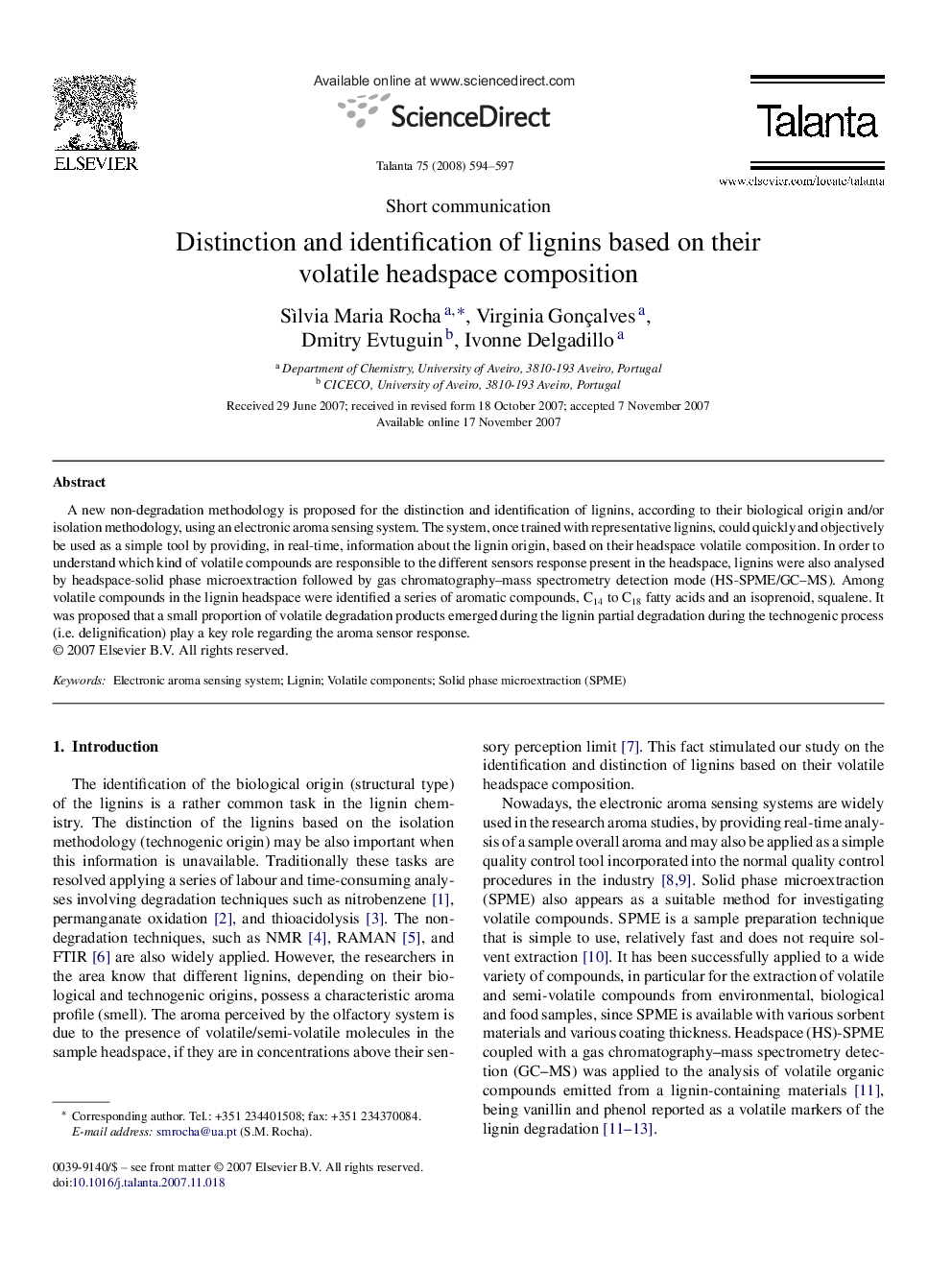| Article ID | Journal | Published Year | Pages | File Type |
|---|---|---|---|---|
| 1243927 | Talanta | 2008 | 4 Pages |
A new non-degradation methodology is proposed for the distinction and identification of lignins, according to their biological origin and/or isolation methodology, using an electronic aroma sensing system. The system, once trained with representative lignins, could quickly and objectively be used as a simple tool by providing, in real-time, information about the lignin origin, based on their headspace volatile composition. In order to understand which kind of volatile compounds are responsible to the different sensors response present in the headspace, lignins were also analysed by headspace-solid phase microextraction followed by gas chromatography–mass spectrometry detection mode (HS-SPME/GC–MS). Among volatile compounds in the lignin headspace were identified a series of aromatic compounds, C14 to C18 fatty acids and an isoprenoid, squalene. It was proposed that a small proportion of volatile degradation products emerged during the lignin partial degradation during the technogenic process (i.e. delignification) play a key role regarding the aroma sensor response.
